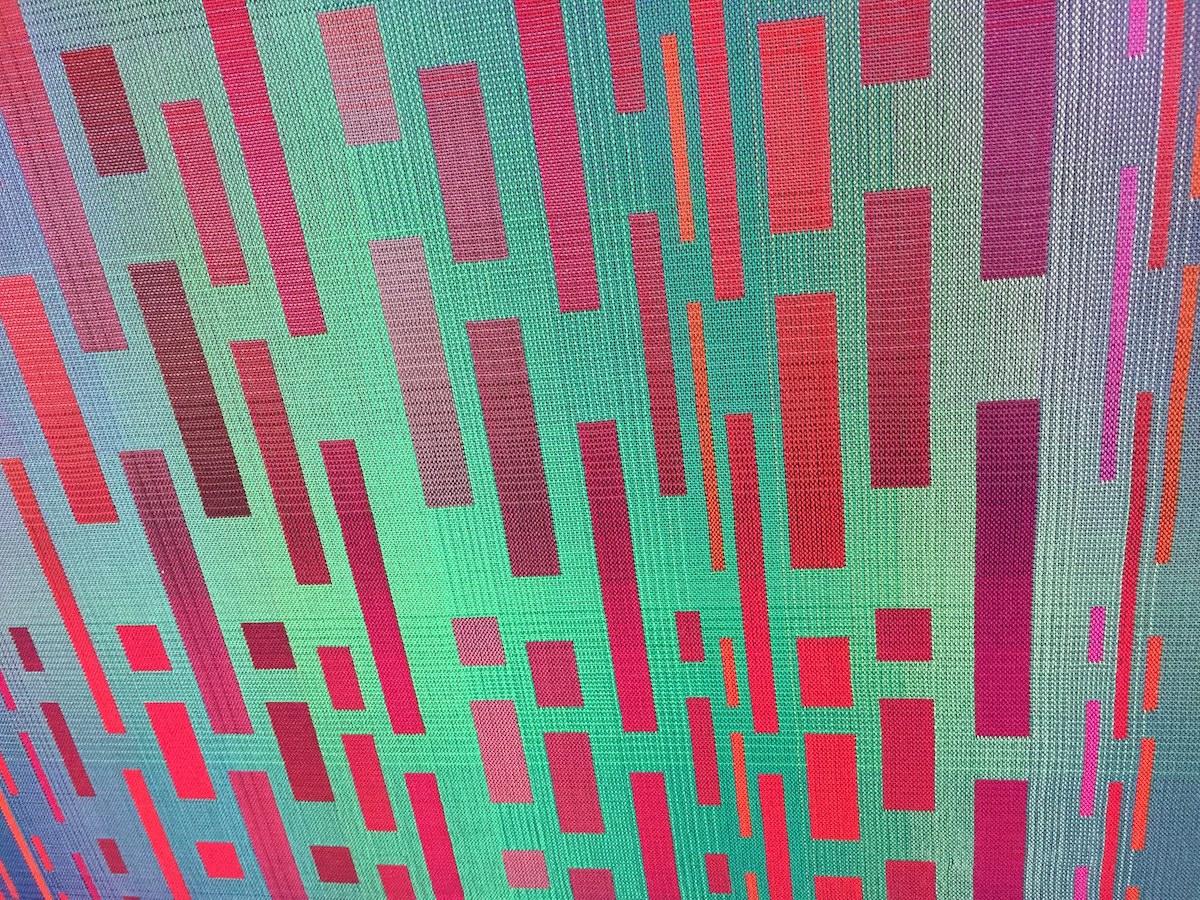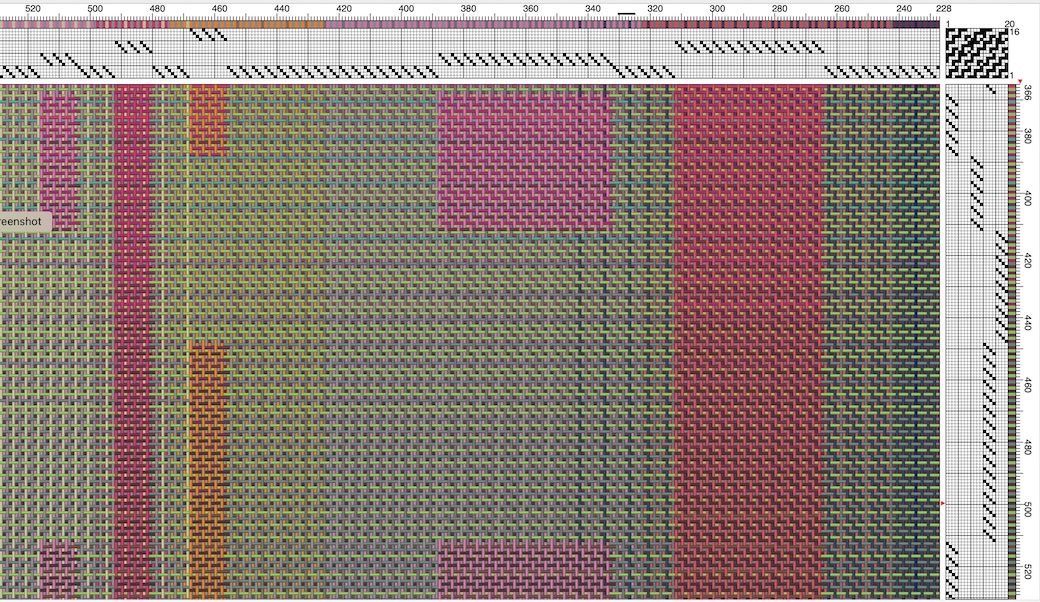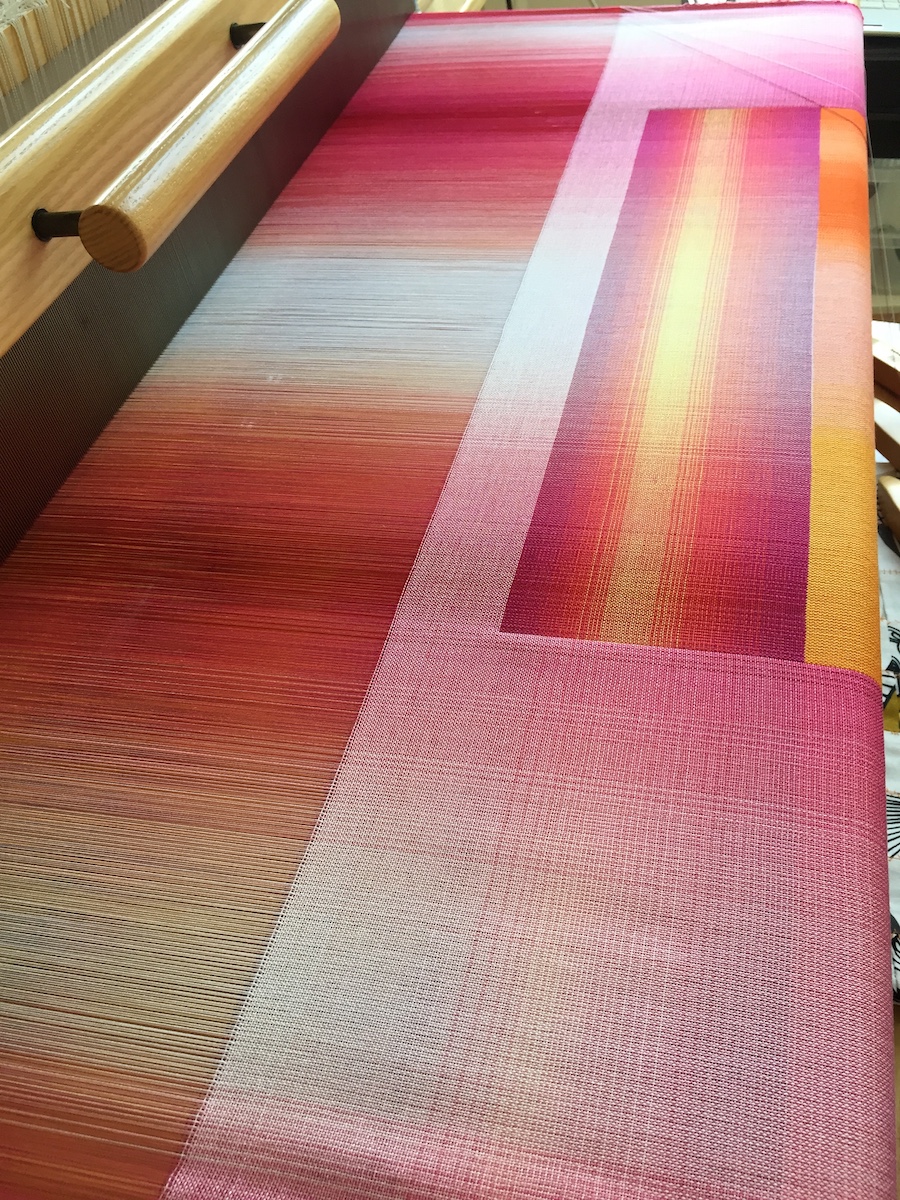How a Double Weave is made
Making a double weave is a complex and lengthy procedure – it takes me several months to develop a concept into the finished artwork. Please note that the illustrations show different weaves.
My double weaves are characterised by the use of gradients in warp and weft, in both layers. Unlike a painter, who can mix his paint to achieve the intended color transitions, a weaver is restricted to use discrete colors. Apart from being an artisanal challenge, this fact is essential to my work as a researcher of color perception. Every step in a gradient, every thread that gets its own color, is a conscious choice that interacts with its adjacent and crossing threads.
Laborious as it is, the process allows to investigate in detail how colors are perceived in relation to their surroundings, how they seem to become another entity as as their surroundings change.

Technically, a double weave consists of two separate fabric layers that swap their upper/lower position to form a pattern. The number of available loom shafts defines the possibilities for pattern making: my 16-shaft loom allows for four pattern units in this technique.
The concept for every new artwork, based on color transitions to research a certain perceptual effect, is elaborated with graphic software and then transferred into a weaving draft. The draft specifies the color for every thread in warp and weft as well as the actions on the loom in order to build the pattern. I use fine cotton thread which is woven at 24 threads/cm. A weave that is 100 cm wide, consequently contains 2400 threads in the warp. This applies to the weft as well.

Once the draft preparations are finished, the warp will be set up. It is wound in 2 cm wide sections on the warp beam in the specified color order. Every thread color has to be exactly at its designated place. A misplacement would mean a break in the pattern that is visible throughout the finished work. Every thread goes through a heddle and then the warp is tensioned and ready to weave.

Just as the warp, the weft follows a pre-defined color scheme. The pattern emerges.

